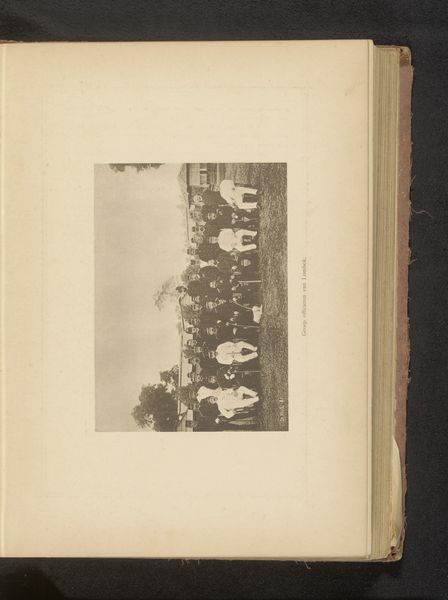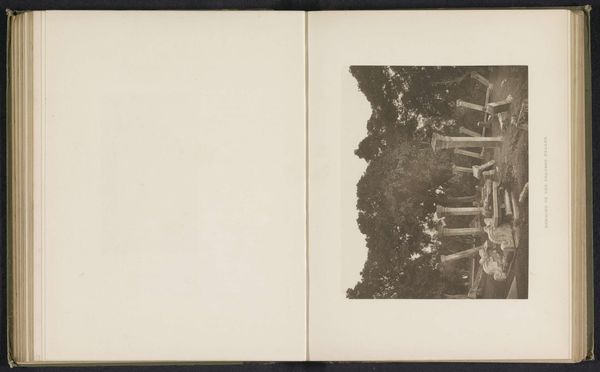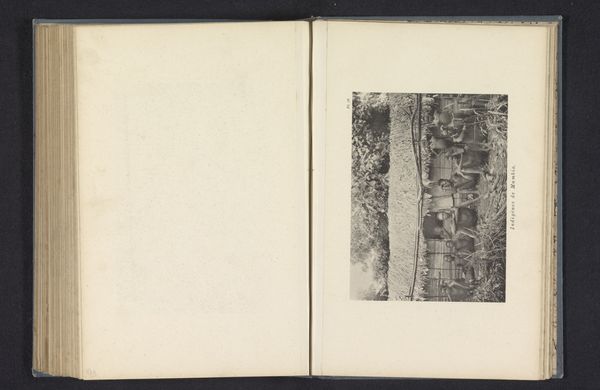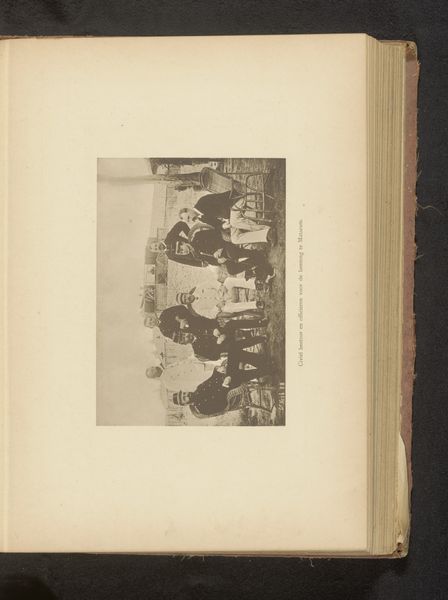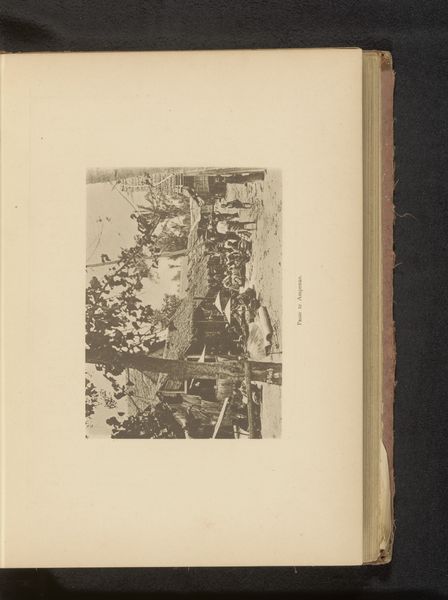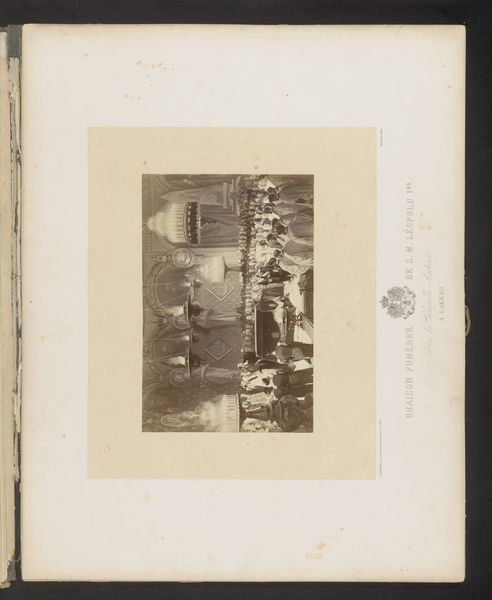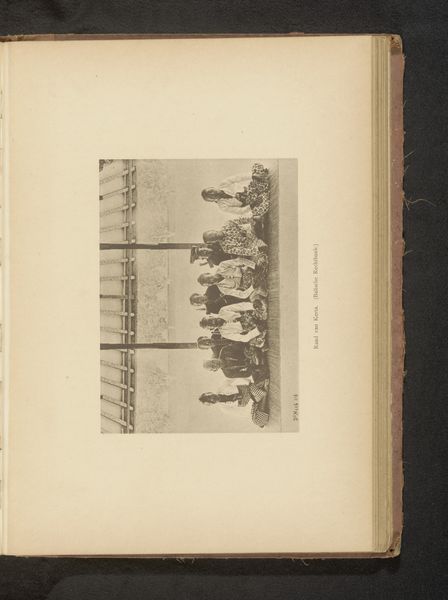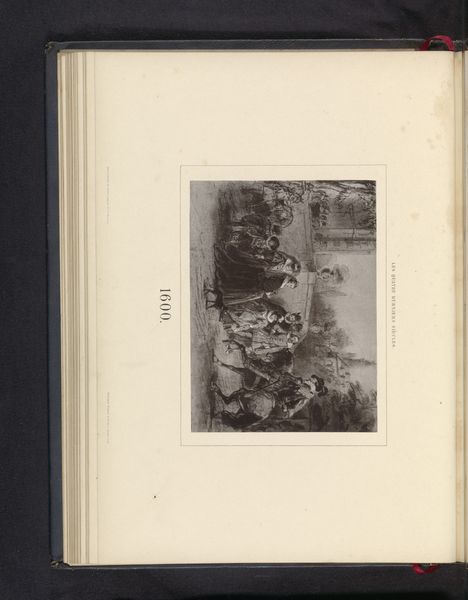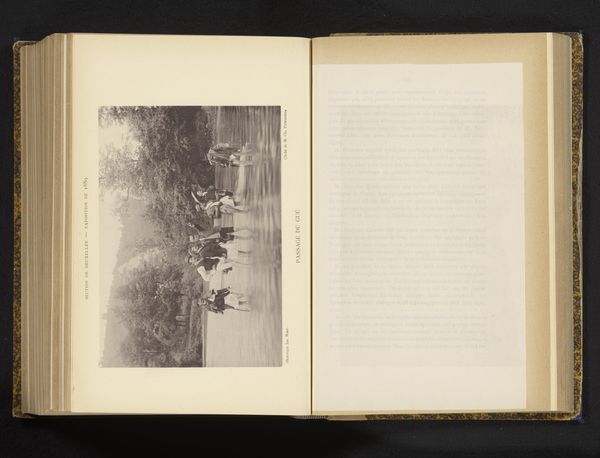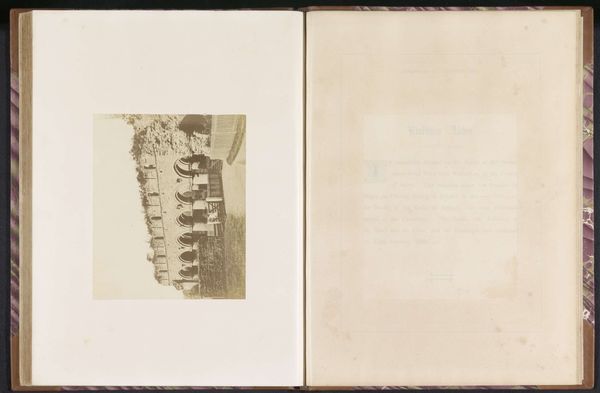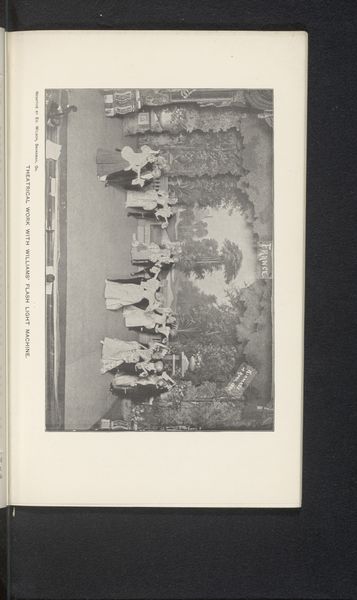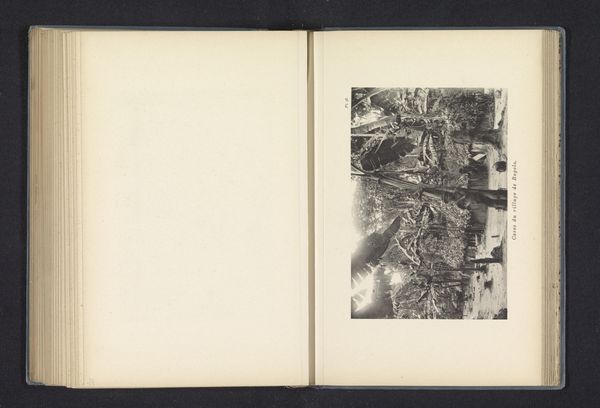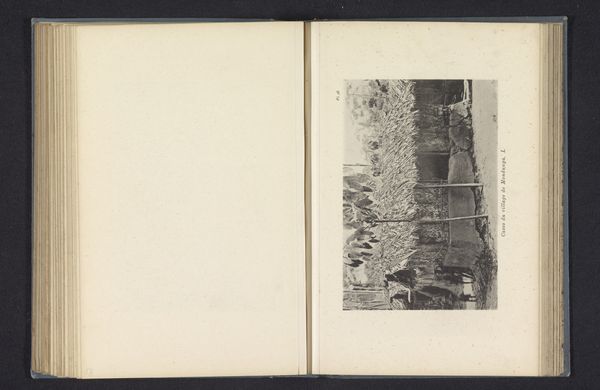
photography, gelatin-silver-print
#
portrait
#
photography
#
group-portraits
#
gelatin-silver-print
#
academic-art
Dimensions: height 215 mm, width 185 mm
Copyright: Rijks Museum: Open Domain
Editor: Here we have Edward H. Hart's photograph "Class of '88," a gelatin silver print made in 1888. The composition is quite striking, a large group of uniformed figures posed in what seems like a natural outdoor setting. I'm struck by the materiality of the print itself. What draws your attention when you look at this image? Curator: As a materialist, I'm fascinated by the gelatin silver print process itself. Think about it: Silver, mined from the earth, chemically processed, and painstakingly applied to paper—another product of labor and resource extraction. Photography at this time wasn't a simple click of a button; it was a chemical dance, an industrial endeavor. The labor involved in producing just this single image would have been considerable, especially given the size of the group. Editor: That's fascinating! So, the 'means of production' really shapes our understanding here? Curator: Precisely. The sharp detail afforded by the gelatin silver process – note the meticulous rendering of each individual’s face – speaks to photography's democratizing potential. How was photographic expertise and access distributed at that time? What were the prevailing socioeconomic structures influencing it, for both the photographer and the students represented? Group portraits like this suggest an aspiration towards upward mobility; access to formal schooling was increasingly a gateway to that for some social classes at this point in history. Editor: And that points towards a complex network of social and economic relationships? Curator: Exactly. This photograph serves as an index, not only to the individuals pictured but also to the Victorian era’s social fabric, anxieties, and aspirations reflected through materials, labor, and evolving social mobility. The photograph isn't merely a representation; it's a material artifact deeply embedded in the socio-economic conditions of its time. Editor: I never thought about a class photo being a representation of more than just the students, but you’re right, there is more at play, and more involved in its creation than first meets the eye. Thanks! Curator: My pleasure. Hopefully now, you too, will question what materials hide just beneath the glossy surface of an image.
Comments
No comments
Be the first to comment and join the conversation on the ultimate creative platform.
